Radial Straw Bale School
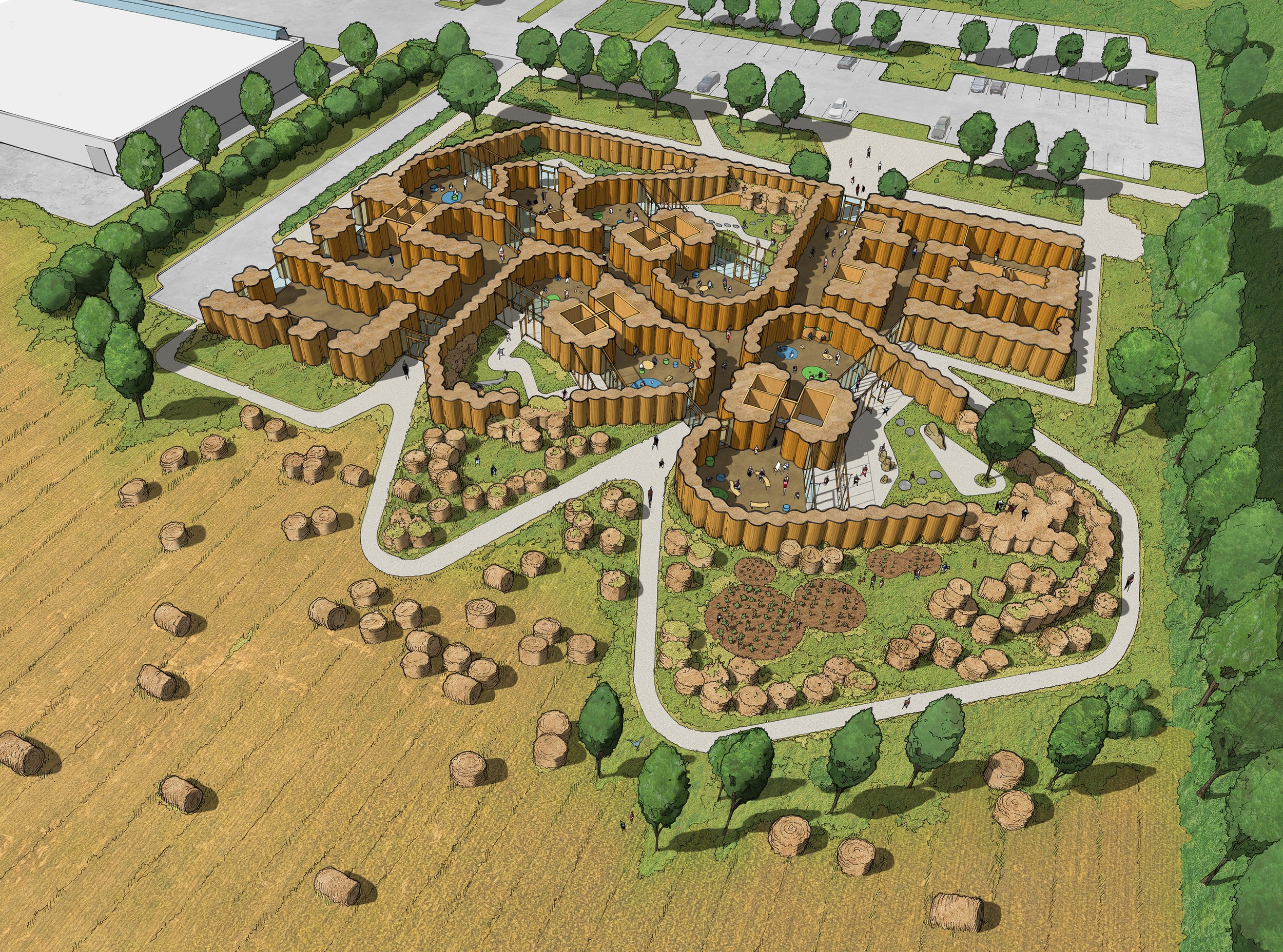
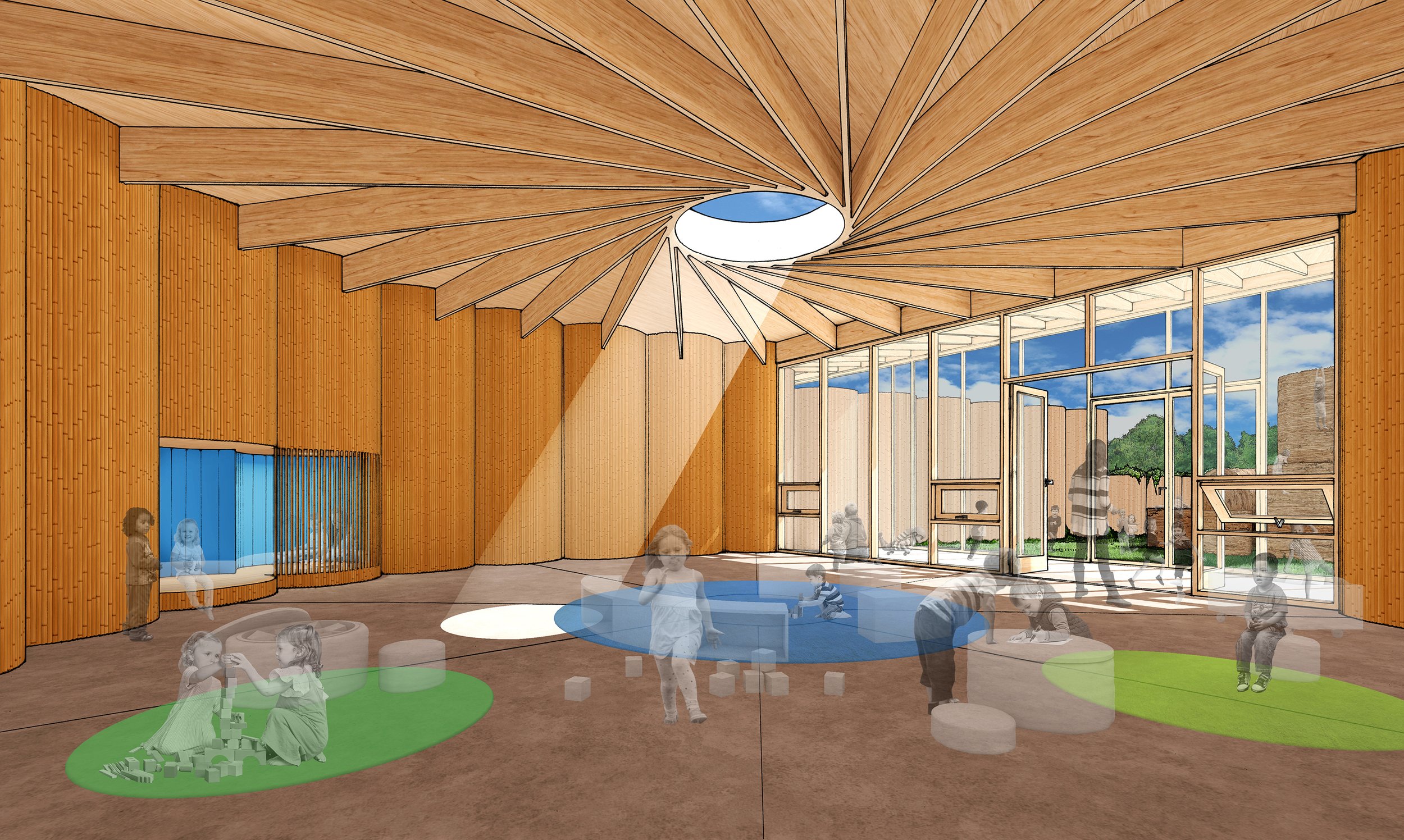
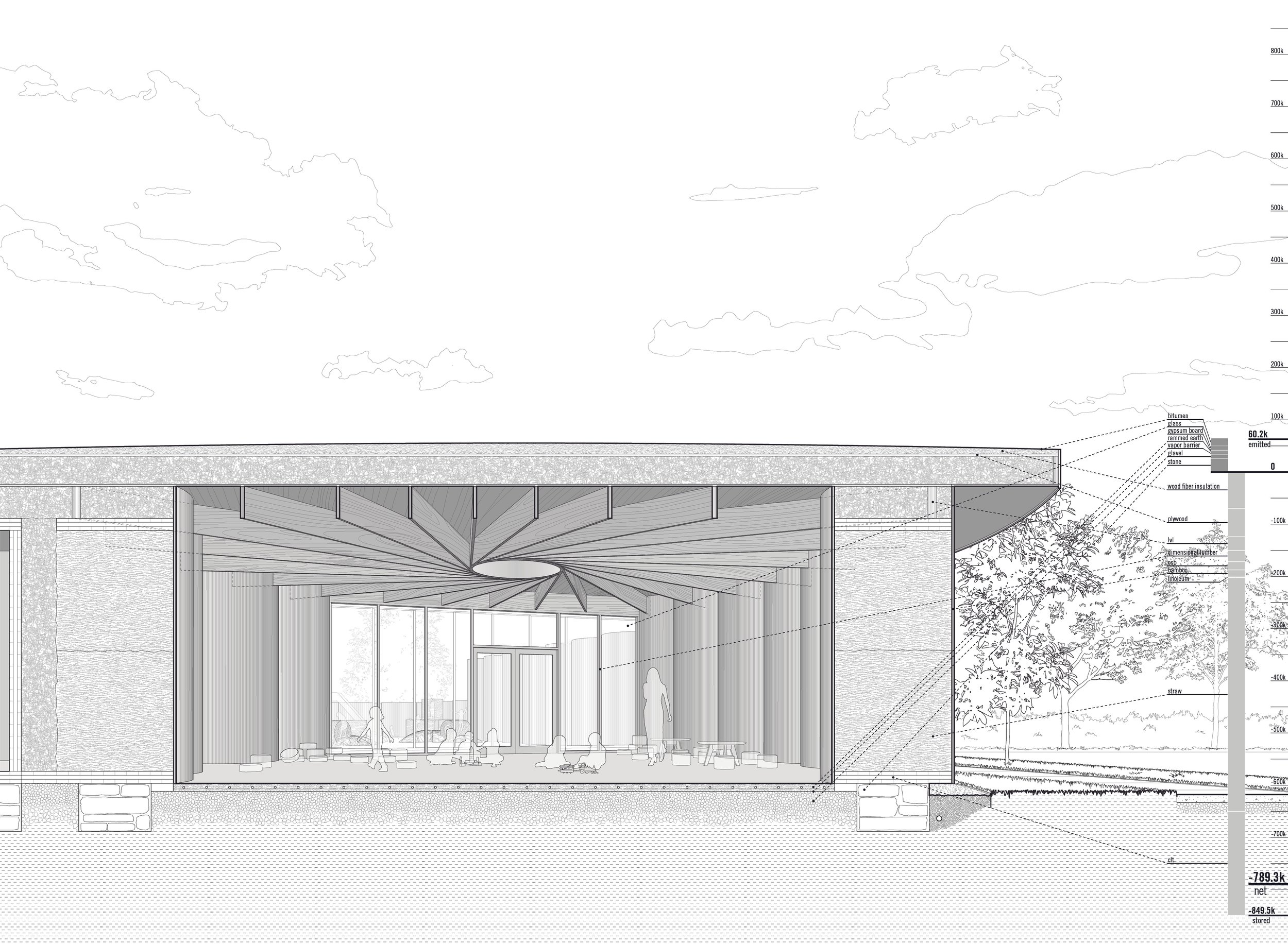
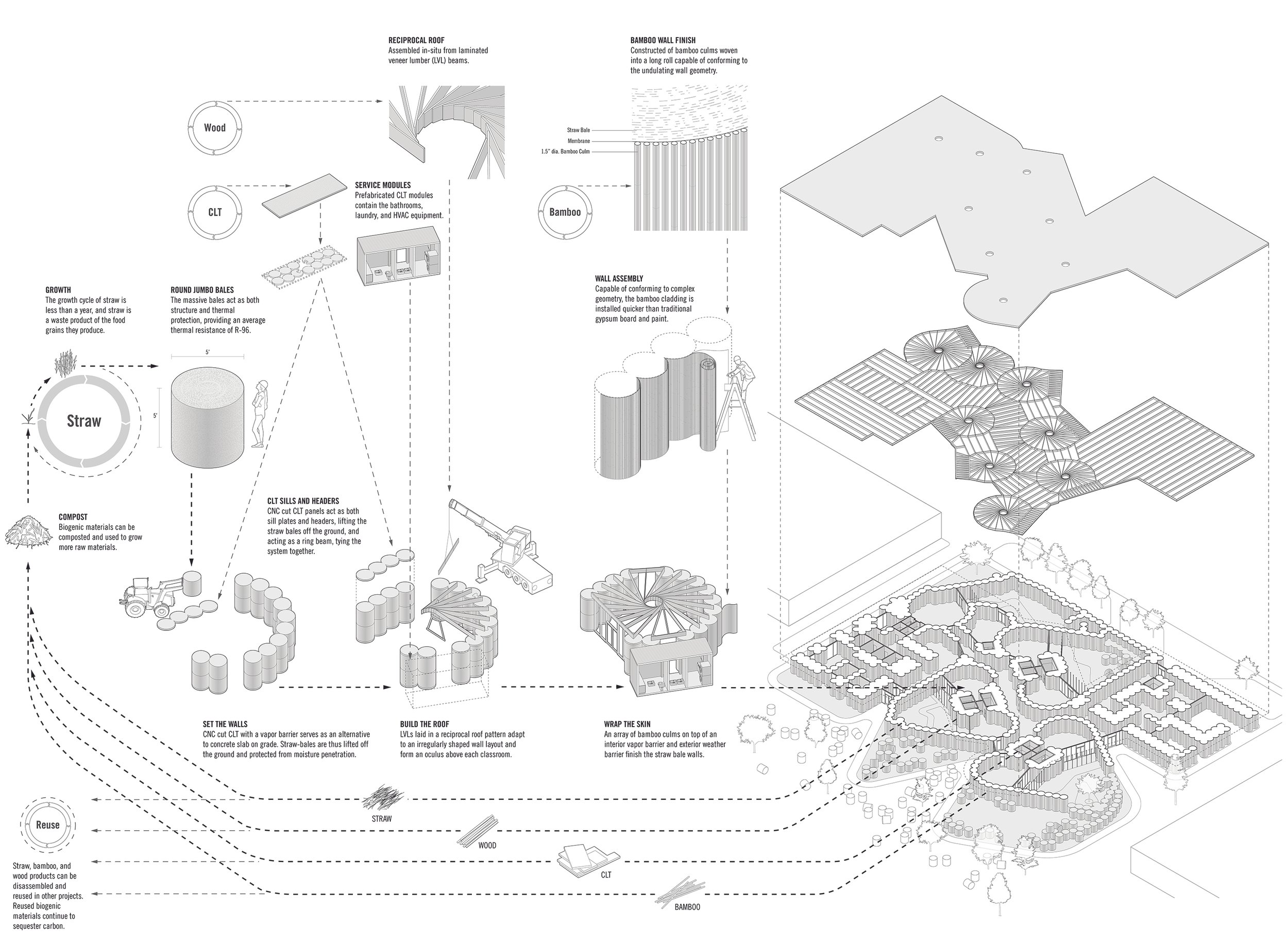
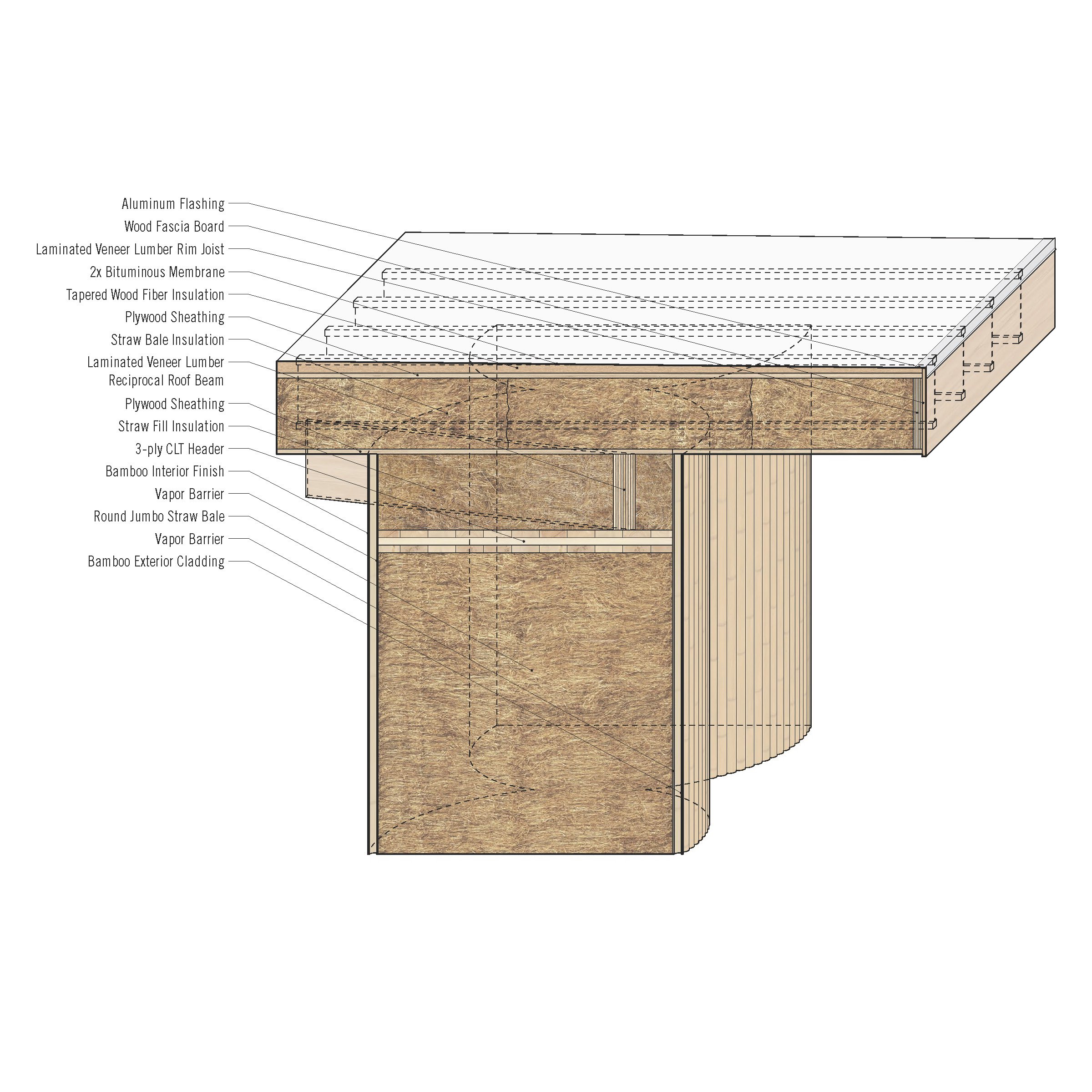
Radial Straw Bale School
This project for an early childhood education center in rural America starts with a ubiquitous feature of the agricultural landscape—the large round straw bales that occupy fields throughout the country. Typically around 5’ in diameter and roughly the same dimension in depth, the round bale is an efficient means of storing straw that allows for transport and manipulation by small scale equipment. The mass of the round bale creates a high degree of compression, making it structurally more robust than typical rectangular bales. Pressed together to thicken their line of contact, the bales form walls with a high insulative capacity at an approximate R-value of 96.
Addressing a widespread need for local childcare facilities to serve communities outside of denser urban areas, the project transforms the round straw bale into a readily deployable tectonic system that integrates structure, thermal performance and envelope in one. Round bales are stacked two-high to form columnar masses and arrayed to create a variety of spatial conditions, from classrooms to meeting spaces, play areas to gardens. Taking advantage of the capacity of the bale to create curving geometries as readily as straight walls, the primary classrooms comprise circular spaces arranged in pairs around a conjoined CLT service core and incorporating a shared exterior play space. Each classroom’s round bale walls are capped by a continuous ring beam and spanned by LVL members in a reciprocal pattern, creating a central oculus, and topped by an additional thickness of insulating straw. A membrane of linked bamboo verticals forms a flexible skin which surfaces the round bales, creating a protective envelope and interior finish, converting adjacent bales into contiguous walls.
Within the classrooms, the bales create opportunities for storage and inhabitable walls and extend outward to define bounded exterior play spaces. Drawing on a progressive ethos of early childhood education which foregrounds the importance of year-round outdoor activity, these shared areas are a critical extension of the interior learning environments with the bales arrayed to create an interactive playscape, and incorporated into vegetable gardens that provide both an educational and nutritional resource. As they extend into the site, the bales lose their protective bamboo skin, allowing them to naturally decompose into the surrounding agricultural fields. Office and administrative spaces are carved subtractively from dense aggregations of bale columns, creating a thickened, carbon-sequestering poche that contrasts with the circular arrays of the classrooms.
Type
Credits
Two Straw Bale School Designs: Paul Lewis, Marc Tsurumaki, David J. Lewis, Kyle Reich, Adrian Mitchell, Zhuofan JOJO Ma, and Gabriela A. Villabos Zambrano.
